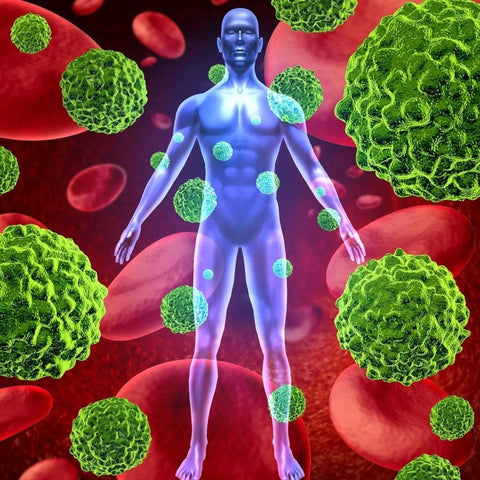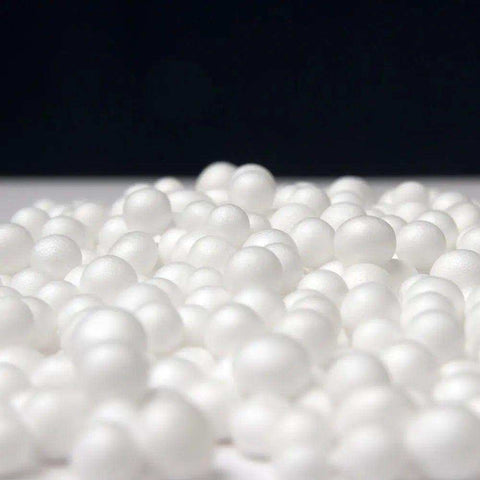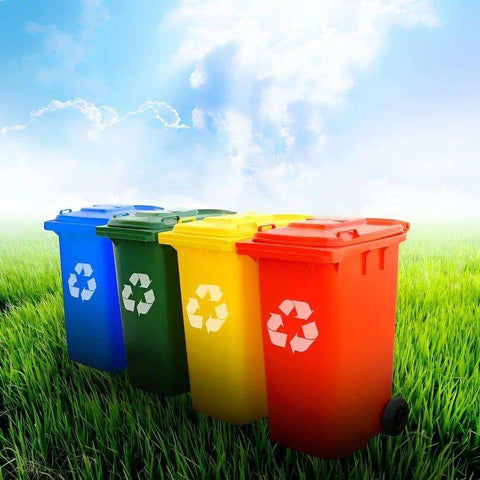EPS Bean Bag Filling is a form of expandable polystyrene. But is it non-toxic bean bag filling? We discuss the environmental impacts of EPS Beads. Interestingly, the first bean bags were invented by the Egyptians around 2000 BC, using dried beans as filling, which influenced modern designs. Environmentally friendly bean bag filling is an alternative to synthetic fillers, such as polystyrene beads. Cedar shavings are a natural bean bag filling that is water-repellent and holds its shape well.
A question often asked about high-end bean bag chairs, is whether the filling is safe and eco-friendly. Is there a non-toxic bean bag filling available? Increasingly, people are concerned about the environmental impact of their purchases. And a concerted effort is being made to live sustainably with future generations in mind. Because of this, some people have begun to avoid the use of plastics, Styrofoam, and other manmade products. And bean bag beans have become a primary concern. However, when these beads are produced according to accepted manufacturing standards and properly recycled or disposed of, they are considered an eco-friendly material. Envee beans are non-toxic and contain no harmful additives. Recycling old clothing as bean bag filling provides an eco-friendly option, and using old pillows is another cost-effective and sustainable choice. Items that are typically thrown away, such as old clothes and pillows, can be repurposed as bean bag filling to promote sustainability and reduce waste. So, is bean bag filling environmentally friendly?
What is bean bag filling?
To be able to understand how bean bag filling does or does not affect the environment, it is first necessary to comprehend what filling is and how it is manufactured. The vast majority of, and best quality, bean bag filling is made from virgin expanded polystyrene (EPS) beads. EPS is considered one of the best materials made for both packaging and construction. It is very popular in the electronics industry. EPS foam protects many other items the average person purchases every day. There are some qualities that make it a prized material in many industries, including bean bag design and manufacturing. It is light yet durable, rigid and resistant to pressure. It also provides superior thermal insulation and can be fabricated in numerous ways for a broad range of applications. EPS beads are used in the majority of bean bag chairs in Australia. Envee beans, made from Ingeo, are a 100% plant-based alternative that contains no nasty additives. When choosing Envee beans or any other filling material, it is essential to select a reputable brand to ensure quality, reliability, minimal off-gassing, and long-term durability. Crushed foam can be mixed with polystyrene beads to enhance the feel of bean bags. Shredded foam is also commonly used as filling for cushions, providing added bounce and comfort. When choosing the right bean bag filling, consider whether the filling is suitable for your intended application, such as indoor or outdoor use.
types of bean bag fillings
When it comes to creating the perfect bean bag chair, the choice of bean bag filling plays a crucial role in comfort, durability, and environmental impact. Today’s bean bags can be filled with a wide range of materials, each offering unique benefits and catering to different lifestyles and eco-friendly preferences. Here’s a closer look at the most popular types of bean bag fillings available:
Expanded Polystyrene Beans (EPS): The classic choice for most bean bags, expanded polystyrene beans are lightweight, supportive, and help maintain your bean bag's shape over time. While they’re a staple in the industry, it’s important to note that EPS beans are made from plastic and are not biodegradable. However, they can be recycled in many areas, making them a practical option if you’re careful about end-of-life disposal.
Recycled Materials: For those seeking a great alternative to traditional fillings, recycled materials such as old clothes, plastic shopping bags, and shredded grocery bags can be used to fill bean bags. This approach not only gives new life to items that might otherwise end up in a landfill but also creates a comfy and eco-friendly bean bag. Using recycled materials is a creative way to reduce waste and save money, especially if you’re refilling or topping up your bean bag at home.
Natural Materials: If you’re looking for a plastic-free and biodegradable option, natural materials such as dried beans, hay, and cedar shavings are excellent choices. Dried beans provide a firm, supportive feel, while hay offers a softer, more relaxed seating experience. Cedar shavings are especially popular for their beautiful fragrance and naturally water-repellent properties, making them ideal for outdoor bean bags. These materials are renewable resources and break down naturally, making them a top pick for environmentally conscious buyers.
Foam: Foam is another popular bean bag filling, known for its plush comfort and durability. Many brands now offer foam made from recycled materials, providing a great eco-friendly alternative to traditional polystyrene beads. Foam fillings are often used in combination with other materials to create a uniquely supportive beanbag that adapts to various shapes and provides long-lasting comfort.
Envee Beans: For those seeking a truly sustainable option, Envee beans are a standout choice. Made from 100% plant-based materials, these beans are non-toxic, contain no nasty additives, and are both durable and comfortable. Envee beans are a great bean bag filling for anyone looking to minimise their environmental footprint without sacrificing quality.
Polystyrene Beads: Similar to EPS beads but typically smaller, polystyrene beads are often used in combination with other materials to create a soft and supportive bean bag. While they share many properties with EPS, their smaller size can make a distinct feel and shape, and they’re often chosen for bean bags that require regular topping up or refilling.
Sawdust is an inexpensive and readily available filler for DIY projects, especially when used as a bean bag filling. While it can provide a unique and comfortable feel, it’s essential to be cautious—sawdust can be messy and may contain small particles or toxins if not sourced from untreated wood. It’s best used in combination with other materials or for bean bags that children won’t use.
Hay: Hay is a natural, biodegradable filler that offers a soft and relaxed seating experience. While it’s a great alternative for those seeking a renewable resource, hay may flatten over time and isn’t as durable as most other alternatives. It’s best suited for temporary or decorative bean bags rather than everyday use.
Cedar Shavings: Cedar shavings are distinguished by their distinctive fragrance and natural resistance to moisture. They’re a great option for outdoor bean bags or for anyone who wants a filling that’s both comfortable and naturally water-repellent. Cedar shavings are also biodegradable and can be composted at the end of their life.
Combination Fillings: Many great bean bags utilise a combination of materials—such as foam and polystyrene beads—to create a filling that’s both supportive and long-lasting. Mixing different shapes and materials can help you achieve the perfect balance of comfort, durability, and eco-friendliness for your unique needs.
When choosing the right bean bag filling, consider your priorities: Are you looking for a soft, supportive seat? Do you want a filling that’s easy to refill or top up? Is environmental impact your top concern? With so many options—from recycled materials and natural fillings to innovative plant-based beans—you can create a bean bag chair that’s comfy, durable, and kind to the environment. Whether you’re shopping for a great bean bag for your living room or a uniquely supportive bean bag for outdoor use, there’s a filling out there to suit every lifestyle and value.
How is eps manufactured?
EPS is derived from a material manufactured specifically for expansion through the gases it contains. Before it undergoes this process, it is known as expandable polystyrene, a hard plastic that includes an expansion agent. It is created as a derivative of crude oil when hydrocarbons are separated and refined into fuel products, such as gasoline, diesel, jet fuel and kerosene. Plastics comprise about 4 per cent of the 4,000 products made through the polymerisation of oil, and of that total, only about 1 per cent is EPS. When making bean bag chair filling, expandable polystyrene is heated to 80 °C to 100 °C in machines called pre-expanders. This treatment causes the raw material to transform into cellular beads with pockets of air inside. When the beads cool and dry, a vacuum forms in the centre, which improves their elasticity and capacity for expansion. Finally, the beads are dropped into moulds and steamed until they bind together in the desired shape, which is, in this case, larger beads. For the manufacturing process, steam generated through the burning of natural gas is the primary energy source. Water consumption is extremely low, and the water is reused several times. Additionally, no solid waste is generated during manufacturing, and scrap pieces are recycled and reintroduced into production until all the material is utilised. Thanks to these processes, the only emissions come from the low levels produced by burning natural gas. Ingeo—the material used in Envee beans—generates around 80% fewer greenhouse gases during manufacturing compared to traditional polystyrene. Choosing bean bags filled with recycled materials offers both an eco-friendly option and potential cost savings.
properties of eps beads
EPS is prized for its many unique properties, including all of the following: Envee beans are a comfortable, durable, and eco-friendly filling material for beanbags. Envee beans can be purchased in bulk for large orders.
-
Lightweight – EPS is only 2 per cent solid material. The other 98 per cent is air. These components make it one of the lightest materials of all, and it has less mass than nearly any other type of bean bag filling.
-
Energy absorption – EPS absorbs a high amount of energy, making it an ideal material to resist the weight of a person without collapsing. For these reasons, it is also used as a packaging material for sensitive electronic equipment, as padding for safety helmets, and as a lining for children’s car seats.
-
Compression – EPS resists compression so that even when heavyweights and pressures are applied, it bounces back to its original form. This resistance makes it durable. And the beads usually remain in good shape inside regularly used bean bags for several years. Traditional polystyrene beans can become flat over time, reducing support and comfort, but alternatives like Envee beans are designed to last longer and maintain their shape.
-
Humidity resistance – EPS is not affected by moisture because it is impervious to water and water vapour.
-
Chemical resistance – EPS is highly resistant to chemicals, making it a hygienic material that is often used for packaging food and pharmaceuticals.
When you sit in a well-filled bean bag, you experience superior comfort and relaxation thanks to the lasting support of quality beans.
All of the above properties make EPS a very favourable material for many applications, including construction. Its features of compression resistance and energy absorption allow it to be used safely as insulation for load-bearing roofs, as well as a substrate for flooring and road construction.
energy analysis of eps
Energy analysis is the method scientists use to determine the total impact of a material or product from the time it is produced to the time it is disposed of. Everything we make and do has some effect on the environment. And energy analysis is a good way to measure that impact. Even if a company claims that the materials in their products are eco-friendly, the statement means nothing without backing by an energy or lifecycle analysis that includes measurements of the following factors:
-
Pollution to the air and water
-
Energy consumption during production and use
-
Carbon footprint and potential to add to global warming
-
Recyclability
-
Energy used for disposal
-
Final disposal volume
In determining whether EPS is an environmentally friendly material, consider the following comparisons in which lower numbers in the analysis mean the material has less of an impact:
-
Disposable Cups - Paper manufacturers would have you believe that their cups are much more environmentally friendly than Styrofoam cups. However, an analysis of the chemicals, electricity, water, steam, and crude petroleum reveals that EPS has a rating of one in each category. At the same time, paper cups have an average rating of 35.
-
Packaging - As a packaging material, EPS also scores one in each of the following categories: energy consumption, pollution, potential for global warming, solid waste volume, cost, and weight. However, pulpboard, fiberboard, wood, and paper packaging have a combined average rating of three. Paper-based packaging, made from renewable resources, is plastic-free and easy to recycle or reuse, making it an environmentally friendly option.
When considering the cost, the price of bean bag filling can vary depending on the material used and whether it is purchased online or in-store. Many retailers offer bean bag filling for delivery, and customers can conveniently purchase online for home delivery. Shipping rates and delivery options can significantly impact both the overall price and the environmental footprint, with some retailers offering customers the ability to check shipping rates based on their location to ensure transparency and affordability.
bean bag filling environmentally friendly
EPS is 100% recyclable, and tens of thousands of tons are recycled annually. Several organisations inform consumers how and where EPS can be recycled. In some locations, it can be picked up curbside. However, in some cases, it must be taken to a local recycling centre. Most of the EPS collected is reformed and used for construction. However, new processes are available that can convert the material into other types of plastics. Additionally, EPS can be burned to generate heat. Which is an efficient use of its energy potential? And when done correctly, heat generation through EPS creates no toxic emissions and very low levels of non-toxic ash.





